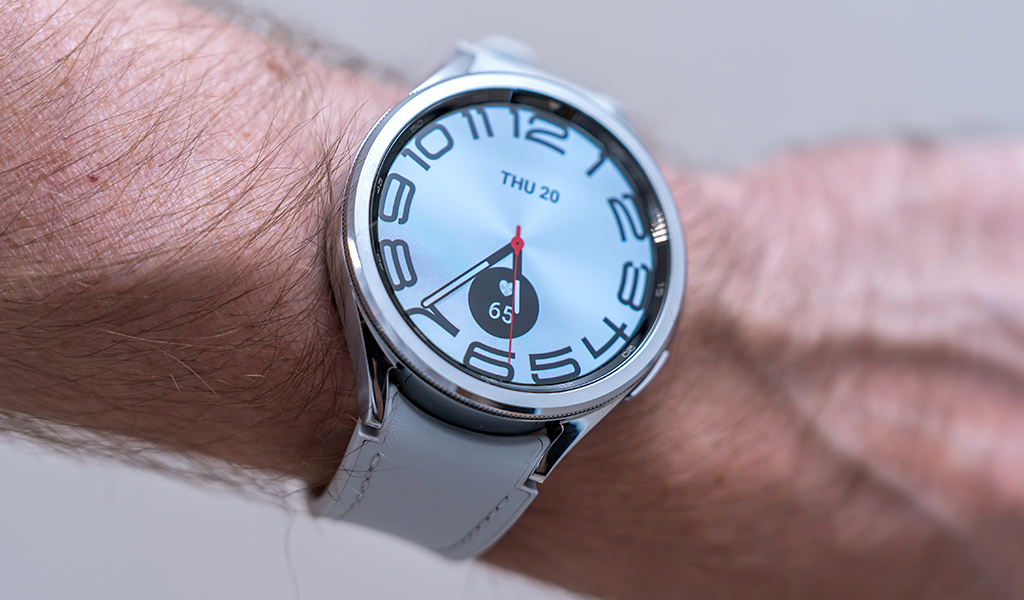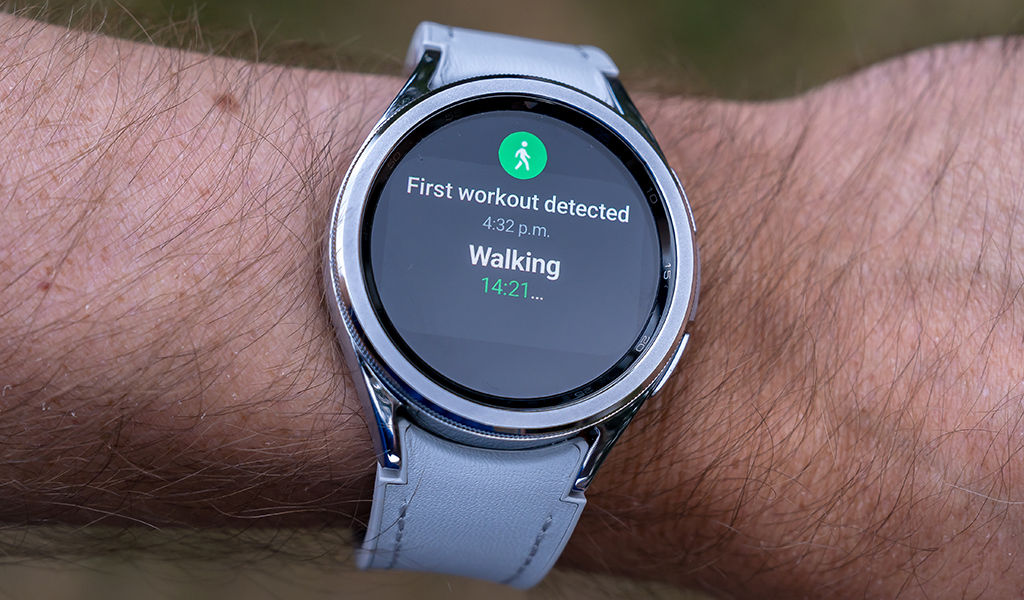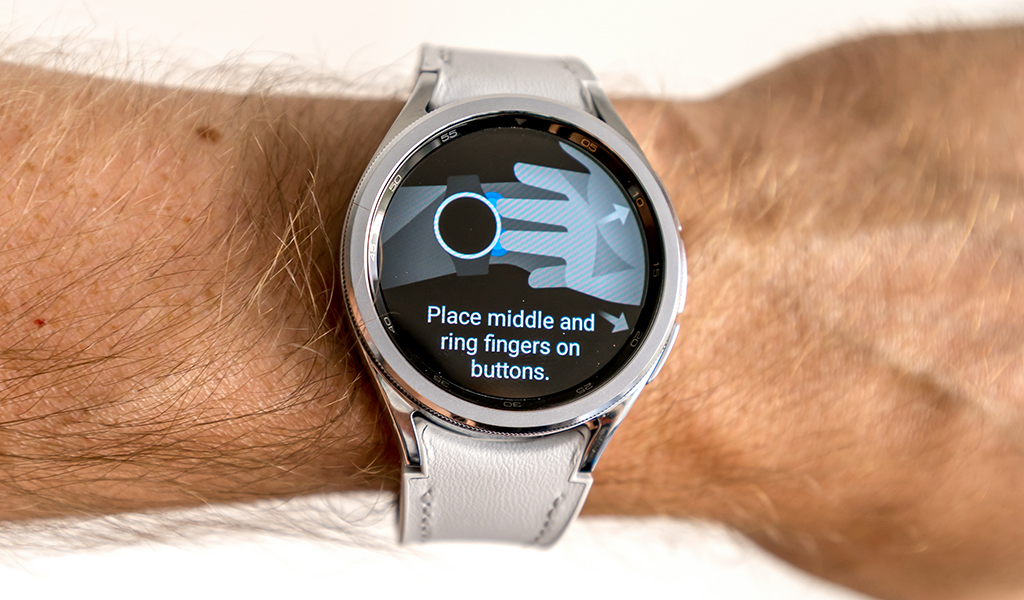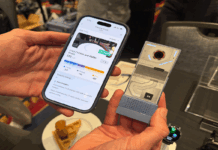
Samsung went back to a very familiar design with the Galaxy Watch6 Classic by bringing in the excellent physical rotating bezel. After leaving it out from the Galaxy Watch5 series, its return signals Samsung isn’t done with including it in future smartwatches, especially when it remains one of the best ways to navigate the interface.
Mostly an incremental update from the previous models, the Watch6 Classic brings some new features to your wrist, along with an elegant design that ensures it fits in anywhere you wear it. The 47mm size is also Samsung’s biggest smartwatch to date.
Design and setup
The Galaxy Watch6 Classic comes in both 43mm and 47mm sizes, giving you a smaller option should you choose it. You get the rotating bezel with either size, also ensuring you don’t lose out on the best way to cycle through the interface. It’s an attractive watch because of its combination of timeless and functional elegance, courtesy of a stainless steel body and sapphire glass screen. Despite its aesthetic, Samsung built this pretty tough, with IP68 dust and water resistance and 5ATM and 810H military standard protection.
Samsung also made the screen bigger, which explains the 1.47-inch AMOLED, which is also double the brightness of the Galaxy Watch5 Pro, making it easier to see in brighter sunlight. To the right, you still get the same two buttons, while the lugs above and below the watch face still fit the same straps. Except the mechanism is different in that it now uses a button to release it rather than a spring-loaded latch, simplifying the process to swap out bands.

The skin temperature sensor is the new standout relative to all the built-in sensors here. The Watch6 Classic can track a fair amount—heart rate, activity, sleep, blood oxygen, ECG, blood pressure (BPM), and now skin temperature. It raises the limits on what the watch can tell you, particularly as your body temperature fluctuates during sleep, or for women going through menstrual cycles. The Bio sensor measuring body composition also returns as an interesting insight into where you stand from a health and fitness perspective. As per usual, certain features require a Samsung phone or tablet, like the ECG and BPM, for instance, but most will work regardless of what Android phone you’re using. Between the Galaxy Wearable and Samsung Health app, you have ways to manage the watch’s features.
Software features

Wear OS continues to mature, and if you’re unfamiliar with it, this watch makes it pretty easy to understand. It’s possible to download and install apps from the Google Play Store directly on the watch, which is huge for convenience and practicality, but also for versatility. Notifications are standard on today’s smartwatches, but it’s always nice to see Google Maps or email and messaging notifications pop up in a timely fashion. Gmail and Calendar are still missing, among others, so hopefully integration grows faster.
Same with using certain fitness or exercise apps, if you prefer them. You won’t find every single one on the Galaxy Watch6 Classic, which could be troublesome if you heavily rely on one that’s not on the list. There are still a lot, though. Google Fit remains an option, only Samsung more tightly integrates the watch with its own Health app, so you’re forced to at least peek in there on a regular basis.
With 16GB of storage (only about 12GB of which is available), you have some flexibility in how many apps you download, or music you store for offline playback, like Spotify and YouTube Music let you do as premium subscribers. Pair the watch with earbuds or headphones, and you could basically leave the phone behind. Built-in GPS on the watch can track location, distance and route outdoors, also negating any need to bring your phone. If you have the LTE version, you can also make or take calls sans phone as well.
Exercise tracking

Like previous models, the Galaxy Watch6 Classic can automatically detect about six exercises after about five minutes of doing them. Super convenient when you get right into it and forget to trigger start or stop, but also a potential pitfall if you’re working out doing something else. All the other 90 exercises need you to manually start and stop tracking yourself to get all the pertinent data.
Heart rate tracking naturally plays a big role in all of that, and its accuracy is integral. For the most part, I’ve found Samsung is mostly on the mark, and takes it further here with personalized heart rate tracking, where the watch tracks beats-per-minute and assigns a zone based on how fast it’s going. The five zones indicate more specific levels for fitness goals, which caters a lot to runners under its current iteration, but could also apply to cyclists, swimmers and climbers, in my estimation.
All of your daily activity appears as heart-shaped bands on the watch, all of which close based on how active you are on any given day. Naturally, the goal is to complete each one, and some watch faces include them one way or another as a constant reminder.
Samsung is pushing fitness tracking with each new iteration, but I’m hoping it finds ways to connect the dots. For example, body composition provides interesting insights into muscle, fat mass, body water, and body mass index, yet doesn’t necessarily tell you much about what you can do if it’s too high or low. It would be cool if there were recommended exercises, heart rate zones or diet choices that could affect those numbers. Granted, you can always look that up elsewhere, or discuss it with a doctor or nutritionist, but the watch could be a good starting point.
Health tracking features

The skin temperature sensor adds an extra tidbit of information on where your health stands. It’s part of a broader package of sensors and features that paint a bigger picture to at least give you a sense of what the numbers mean. Body composition is a good example of that, as is the SpO2 sensor reading blood oxygen. The composition breakdown didn’t impress me as much with the Galaxy Watch5 series, but I found it more interesting here because it gave me a chance to visualize what’s considered healthy or normal.
The ECG is still an excellent feature, even if it’s not going to be as precise as a proper device in a doctor’s office. I would like to see something a little more automated here for those who may be concerned about fluctuations or atrial fibrillation. The blood pressure monitor still needs you to download the Samsung Health Monitor app from the Galaxy Store, and to calibrate it with an actual BPM device before the watch can do it itself.

Apart from the skin temperature sensor, the biggest health tracking change falls with sleep. The newer sensor will tell you how your skin’s temperature changed while asleep, as well as blood oxygen. You can even have your phone’s microphone listen for snoring while wearing the watch to track that as well.
After a week of tracking it all, Samsung Health designates an animal to you befitting your habits. For me, it was a lion, which is supposed to be a good thing. From there, it opens things up to sleep coaching, helping you make changes to improve your slumber, which then cascades into feeling better when awake. You see the various sleep stages, along with a sleep score to give you a basic picture.
Battery life
Don’t expect stellar battery life because you won’t get it. The Galaxy Watch6 Classic barely lasted a full 24-hour day for me, forcing me to put it on the charger, either right before bed, or after waking up and having breakfast. It charges fairly quickly, but you will need to place it on a charger often. There are varying reasons why, be it the apps, notifications, GPS, multiple sensors, and everything they’re all supposed to do, leaving you with few ways to mitigate the loss.
Final thoughts on the Samsung Galaxy Watch6 Classic
Returning to a trusted and familiar design helps the Galaxy Watch6 Classic look and feel good, even if you have to take it off often to recharge it. The leather-ish strap it comes with also adds to the watch’s charm and appeal, but the window dressing also looks better because of how much the device can do. There’s not enough here to warrant an upgrade from the Galaxy Watch5 Pro unless you dearly miss the rotating bezel.
The Galaxy Watch6 doesn’t have the physical bezel, but otherwise shares the same features. You can use either one with any Android phone, but not the iPhone. Should you be ready to wear this smartwatch, you likely won’t be disappointed with how it works, though you get more out of it if you have a Samsung phone.
The Galaxy Watch6 Classic is available now in black and silver.




